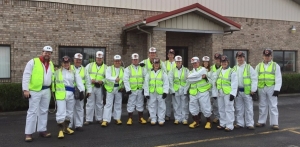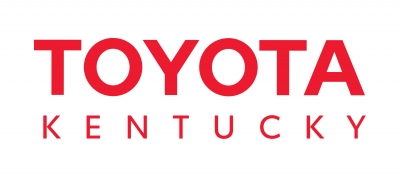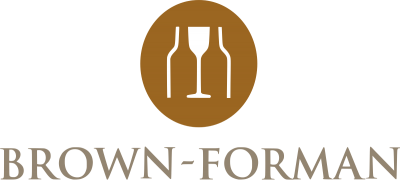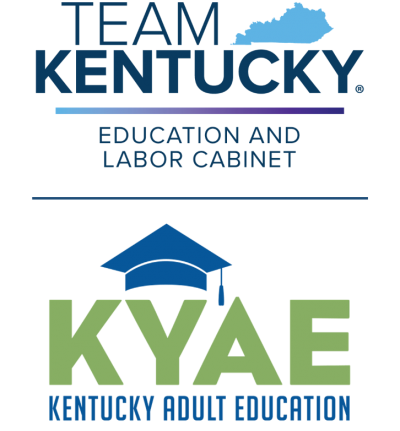November Session Recap

Leadership Kentucky – Ashland and Paintsville
Natural Resources and Environment
By Class Member Brad Wheeler
As the leaves were turning and the autumn chill was in the evening air, our class arrived in the beautiful City of Ashland to learn more about the Commonwealth of Kentucky on its Eastern expanse. The area, as with so many different regions of our state, has its own distinct beauty. Daniel Boone, mentioned that “Heaven must be a Kentucky kind of place” and this holds true in Ashland as the rolling hills of Kentucky’s knobs lift higher in the sky as one drives east to the more mountainous regions of our State.
Energy, Natural Resources and Environment were topics for this month’s session. The topic chosen could not have been more relevant as world leaders currently meet in Le Bourget, France. Since returning back to my home town of Bowling Green, I have reflected upon my education, experiences, and observations while in Ashland.
On our first day, we traveled to visit Booth Energy’s Matrix Mine #1. During our trip, we heard about the grassroots efforts of the Friends of Coal movement. Upon arriving at the mine, we were provided education related to Booth Energy and the mining profession. Safety training was an important early activity of the day as class members prepared for their underground descent. The class was instructed about the actions necessary for surviving an accident, which included navigating in a dark mine, use of respirators, locations of food and water, and additional sources of air. While we explored the mine, some class members remained above ground touring surface mines and reclamation efforts.
One strength of Leadership Kentucky is that the program provides class members unique experiences and the mine was no exception. As part of the class loaded onto mine cars to travel underground, most faced some apprehension as we said goodbye to the sunlight and traveled hundreds of feet vertically and miles back into the earth. As we observed the extensiveness of the mine operation, we all undoubtedly experienced a newly-found appreciation for the jobs that Kentuckians do each day, digging coal from the ground to provide energy to power our homes on cold winter nights. Also impressive was the science behind the mine that included precision mapping, understanding of chemical properties, engineering, construction, hydraulics, hydrology and machinery required to mine coal. There is enough science being used in today’s coal mine to impress any person working in STEM. Ancient Romans may have invented the arch as an architectural feature, but Kentucky must have perfected them through the use of drill bits, steel rods and quick dry epoxy creating hidden arches that held the roof of the mine safely above.
Our second day included tours of AK Steel and the refinery and the barge system operated by Marathon Oil. Everything planned for our session worked harmoniously as Kentucky steel is created from coal, limestone and iron ore. The steel created from AK’s factory is then provided to Kentucky’s automotive industry to build cars. The cars are then powered through the refinery of fossil fuels created by Marathon Oil.
AK Steel’s introductory video, impressively boasts of their ability to “harness the power of our Sun” and described the process of making steel. Outside, individuals could be observed walking next to rail cars filled with molten steel in heat protective suits. Inside, images that will not be forgotten by the class included the beauty of molten steel sparks, as bright as the sun, falling to the ground, heat generated by the slabs of steel as they cooled, and the massive machines that picked up the weight of two or three story houses and shuttled it through the plant. We then traveled the Marathon Oil facility for an education session and tour of the quietly contained, above ground city of pipes and tanks. The large numbers and volume of petroleum products manufactured in this world class facility gave class members an indication that Kentucky is an important place in our country and world. We ended our tours that day at the confluence of the Big Sandy and Ohio rivers at a Marathon Oil barge transportation facility and once again, saw the importance the river has to Kentucky.
On Friday, our very own John May, Manager of Licking Valley RECC, and Gary Hebbeler, General Manager of Duke Energy, provided an excellent panel discussion of Energy in Kentucky. We also heard from Bill Bissett, the president of the Kentucky Coal Association. He gave an impressive presentation on the energy industry followed by information shared by Jared Arnett, the Executive Director of SOAR, about the challenges facing the Eastern Kentucky region. We also learned about the Morehead State University Space Science Center and the remarkable space and satellite research taking place on the campus. We were surprised to find Kentucky’s #1 export is not cars, bourbon, or horses, but aerospace parts!
In closing, the majority of our class had previously spent little time in Ashland. As with almost all of our Kentucky towns, Ashland is often a place that one drives through, but never has the opportunity to stop. Of the talks, tours and presentations, one of the things that became most apparent to our class was the persistence and determination of these dedicated, hard-working Kentuckians as they become increasingly determined to overcome the challenges facing the region. While in Ashland, my thoughts went back to our first days in Leadership Kentucky at Pleasant Hill learning about the challenges our Eastern region faces. While that early educational session didn’t make it personal – going to Ashland did!
The class quickly discovered what is most remarkable about Ashland and all of Eastern Kentucky. It is not the beauty of the area, but the character of its citizens. As I sit at my desk at WKU with my piece of coal on the bookshelf, I want to say, “Thank you, Leadership Kentucky! Thank you, Ashland!” I’m now a Friend of Coal!
























